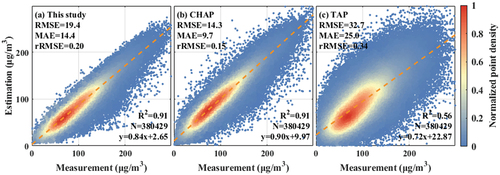Figures & data
Figure 1. Spatial distribution of the discrete O3 monitoring network conducted by the China National Environmental Monitoring Center (CNMEC). (Elevation was derived from consortium for spatial information of the US geological survey).
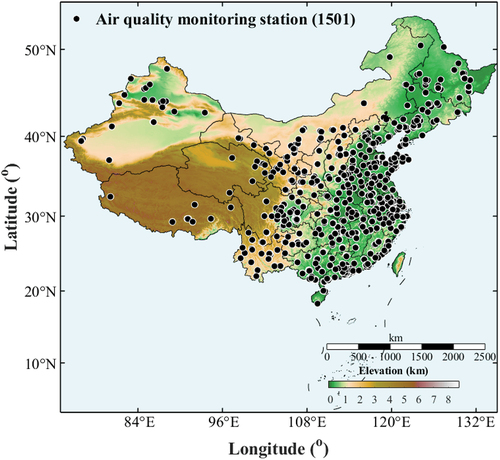
Table 1. Collection of datasets used in this study.
Figure 2. Scatterplot of estimated ground-level ozone concentrations from the conducted model versus corresponding site-based observations for (a) 20 clusters based on spatial K-means method, (b)all available samples, (c)20-fold cluster-based CV, (d)10-fold site-based CV, (e)10-fold sample-based CV. The RMSE, MAE, rRMSE, number of samplings (N), R2 and the linear-regression function are displayed in each scatterplot.
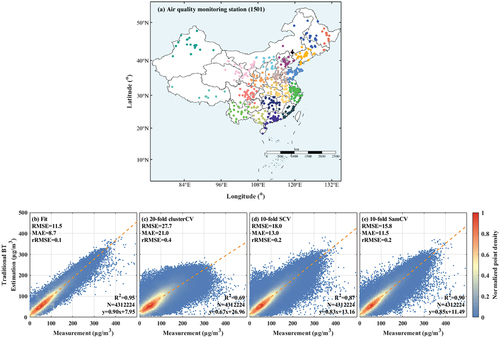
Figure 3. Scatterplot of seasonal estimated ground-level ozone concentrations from conducted model versus corresponding site-based observations for (a-d) direct fitting of available data for each season, (e-h) 20-fold cluster-based seasonal CV, (i-l) 10-fold site-based seasonal CV, and (m-p) 10-fold sample-based seasonal CV. The RMSE, MAE, rRMSE, number of samplings (N), R2 and the linear-regression function are displayed in each subplot.
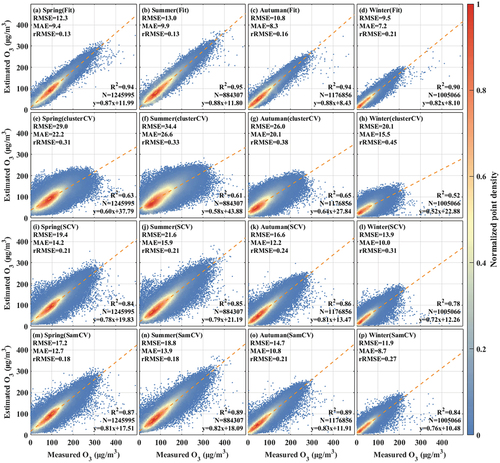
Figure 4. Scatterplot of diurnal estimated ground-level ozone concentrations from conducted model versus corresponding site-based observations for (a-h) 20-fold cluster-based CV for each diurnal time periods, (i-p)10-fold sample-based diurnal CV, (q-x) 10-fold site-based seasonal CV. The RMSE, MAE, rRMSE, number of samplings (N), R2 and the linear-regression function are displayed in each subplot.

Figure 5. Variation of (a) daily averaged estimated O3 concentrations versus measured O3 and (b) daily averaged estimation bias.
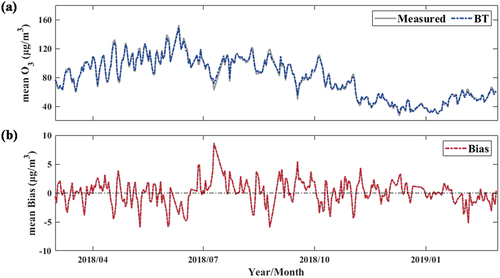
Figure 6. Spatial distribution of estimated performance from conducted model versus corresponding site-based observations for sample number (a), R2 (b), MAE (c), RMSE (d).
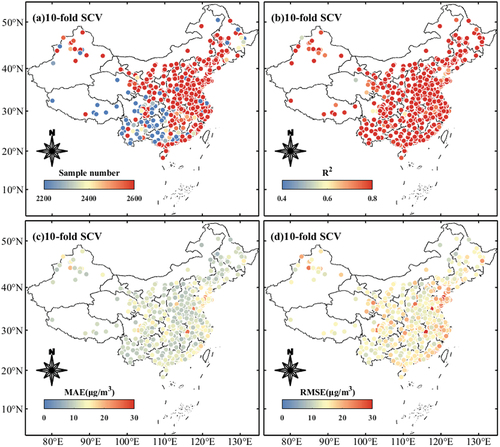
Figure 7. Spatial distribution of estimated performance from conducted model versus corresponding cluster-based observations for sample number (a), R2 (b), MAE (c), RMSE (d).
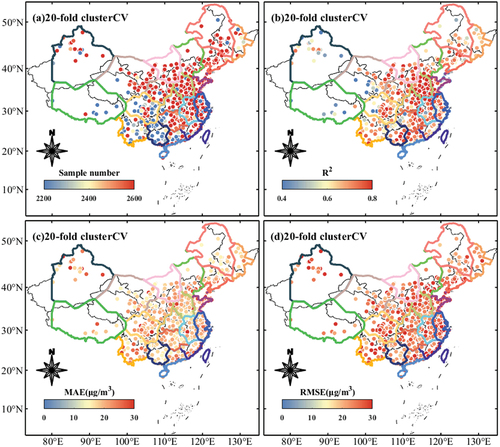
Figure 9. Verification of spatial distribution of seasonal average O3. The site-based seasonal mean ground-level ozone concentrations are represented by tinctorial circles.
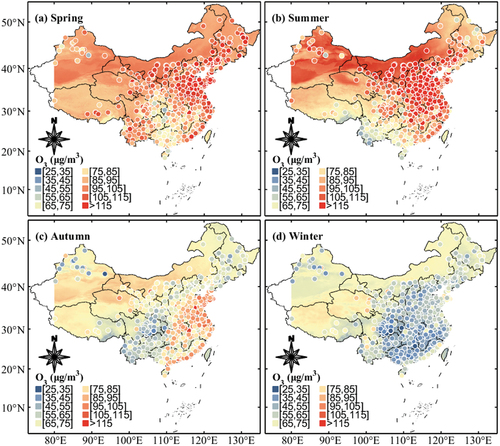
Figure 10. Spatial distribution of average estimated ground-level ozone concentrations for (a) all available data, and (b-i) different diurnal hours (0900 BST-1600 BST).
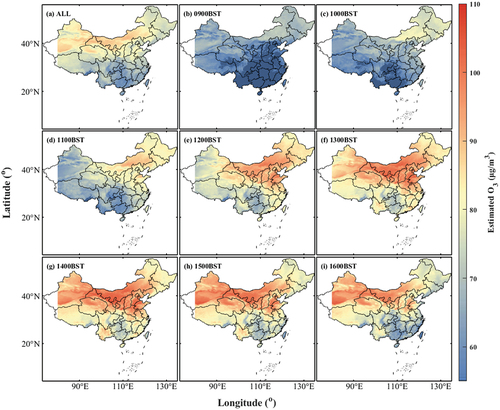
Figure 11. Verification of spatial distribution of hourly average O3. The site-based hourly mean ground-level ozone concentrations are represented by tinctorial circles.

Figure 12. Spatial distribution of hourly estimated ozone concentration on a specific day (Take June 30th, 2018 as an example, and the Beijing-Tianjin-Hebei is displayed as a typical region with severe surface ozone pollution. The top picture shows the whole country, and the bottom picture shows the Beijing-Tianjin-Hebei region).

Figure 13. Verification of spatial distribution of hourly estimated ozone concentration on a specific day (The top picture shows the whole country, and the bottom picture shows the Beijing-Tianjin-Hebei region). The site-based hourly mean ground-level ozone concentrations at corresponding date are represented by tinctorial circles (Take June 30th, 2018 as an example, and the Beijing-Tianjin-Hebei is displayed as a typical region with severe surface ozone pollution).
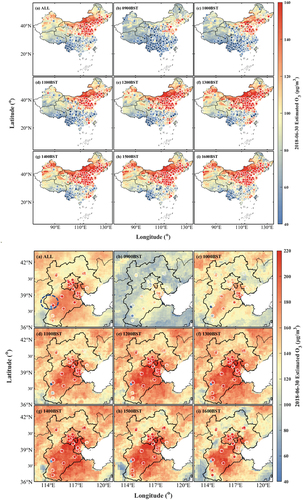
Figure 14. distribution of averaged estimated ground-level ozone concentration for (a)weekdays, (b)weekends, (c)differential between weekdays and weekends and (d)salient region under different ozone generation mechanisms.
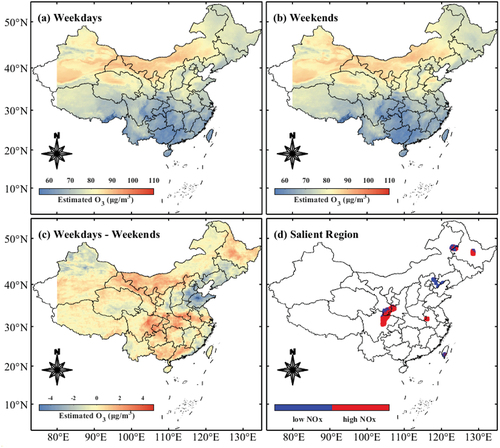
Table 2. Comparison of previous O3 studies focused on China.
Figure 15. (a)Monthly *R values of estimated models with or without Himawari-8 SWR dataset. (b)The importance score of features included in BT model.
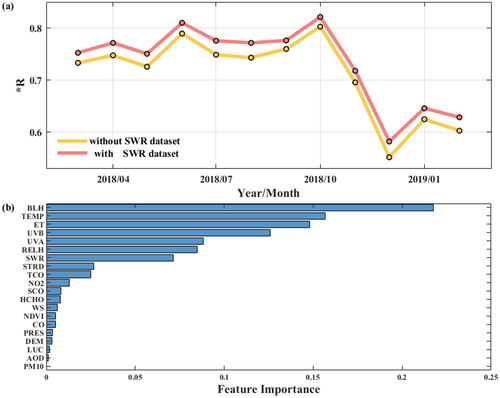
Data availability statement
The raw data used in this study are publicly available from the sources provided in following links. The processed data generated from this study are available upon request to the corresponding author.
- Surface O3 in situ data: http://www.cnemc.cn/
- Short Wave Radiation L3 data and Aerosol Property L4 data: https://www.eorc.jaxa.jp/ptree/
- MOP03J_8 L3 data: https://asdc.larc.nasa.gov/project/MOPITT/
- ML2O3_005 L2 data, OMTO3E L3 data, OMI_MINDS_NO2d L3 data, OMHCHOG L2 data, Land Cover Type (MCD12Q1) L3 data and MOD13C1/MYD13C1 L3 data: https://www.earthdata.nasa.gov/
- ERA5 reanalysis data:https://cds.climate.copernicus.eu/cdsapp#!/
- SRTM 90m DEM Digital Elevation: https://srtm.csi.cgiar.org/


